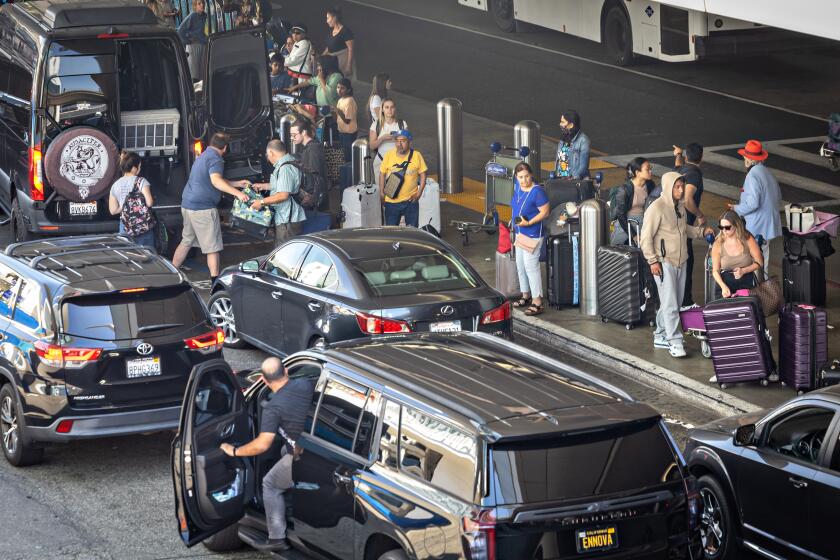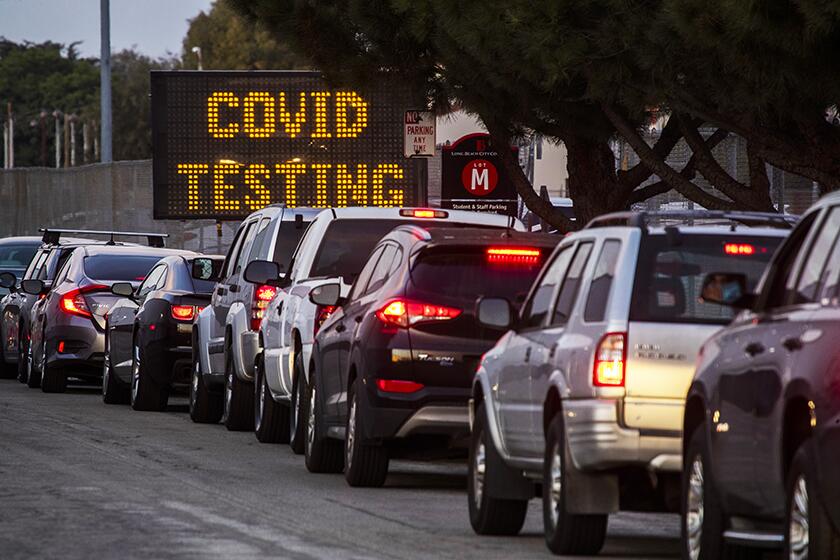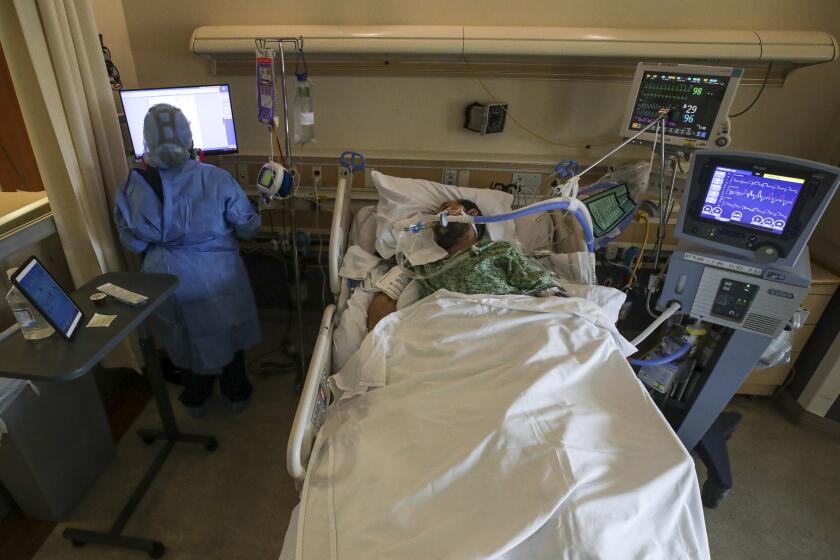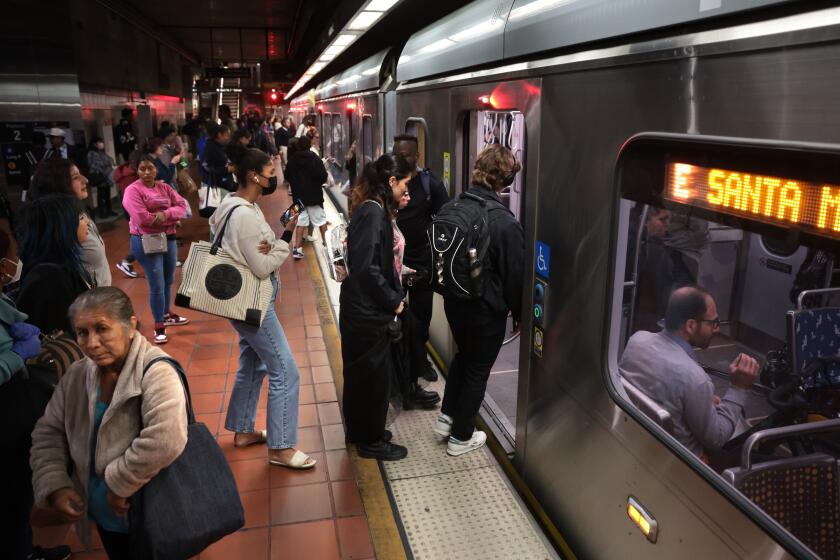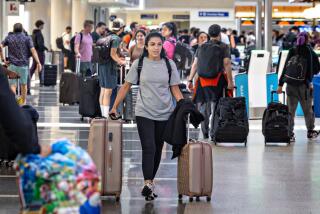Rising COVID clashes with carefree California summer as cases jump, precautions fade
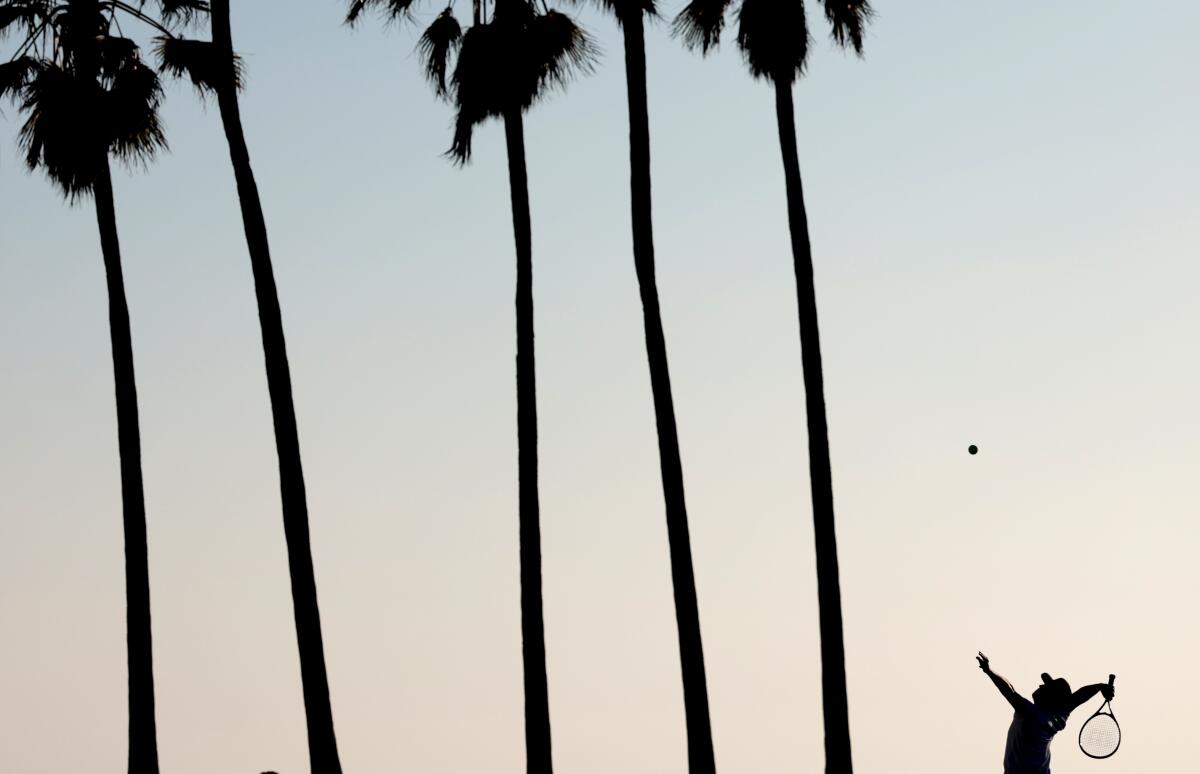
COVID is continuing to rise this summer, and its spread is being aided by people who are still going to work or traveling while sick.
“Certainly, people are trying to get back to whatever life was like before the pandemic,” said Dr. Elizabeth Hudson, regional chief of infectious disease at Kaiser Permanente Southern California. “We’re in a different place than we were before. ... However, good common sense shouldn’t go out the window.”
While COVID is less severe for most people than during the first years of the pandemic — thanks to immunizations and past infections — and guidance about how to stay safe has become less stringent, doctors say it’s still important for people who are sick to avoid putting others at risk.
A new team of subvariants, called FLiRT, is estimated to be 20% more transmissible than last winter’s dominant variant, JN.1. And they’re increasingly dominating the nation; for the two-week period that ended July 6, an estimated 70.5% of COVID specimens nationwide were of the FLiRT subvariants — officially known as KP.3, KP.2 and KP.1.1 — up from 54.9% a month earlier.
COVID cases and hospitalizations rise in L.A. County — and some of those recently reinfected with the FLiRT variants are finding the latest bout the worst yet.
It’s clear Americans’ COVID worries have eased.
A March Gallup poll found Americans are less worried about getting COVID, with 20% of U.S. adult respondents saying they were “very or somewhat worried that they will contract COVID-19.” That’s similar to all-time lows in mid-2021 — amid initial excitement that the pandemic was fading after vaccines were introduced, but before the Delta variant emerged — and mid-2023, and significantly below the 55% to 59% of respondents who feared falling victim to the disease in 2020.
A recent Pew survey found similar attitudes, with only 20% of Americans saying they view COVID as a major health threat, and 10% of respondents saying they were “concerned they will get it and require hospitalization.”
And while COVID vaccination rates were relatively robust in the early years of the pandemic, the appetite for booster shots has waned. As of September 2022, 80% of Californians 12 and older had completed their primary COVID vaccination series. Now, 36.7% of the state’s seniors age 65 and up have received an updated shot since the last version was made available in September, as have 18.5% of those 50-64 and 10% of the youngest adults, up to age 49.
COVID virus levels have jumped significantly in wastewater across the nation, an indication the summer bump is continuing to grow.
How to stay safe right now
The most important guidance is the most common-sense: Stay home and away from others if you’re sick. Symptoms of a respiratory virus can include fever, aches, sore throat, chills, fatigue, cough, runny nose and headache.
Vomiting, diarrhea and stomachache are less common but very real symptoms of COVID-19. COVID as a disease is “like an inflammatory bomb,” Hudson said, “and our [gastrointestinal] system is obviously going to be impacted by anything that’s causing a lot of inflammation — and that shows up as nausea, vomiting, diarrhea.”
People can resume normal activities 24 hours after their symptoms have improved and they’ve been fever-free without using medicine such as Tylenol or Advil, according to the U.S. Centers for Disease Control and Prevention.
But the agency also advises added precautions for five additional days to avoid infecting others, such as wearing a mask, opening windows to improve air circulation, washing hands often, keeping one’s distance from others and continuing to test. People may want to be especially cautious about infecting others during this time if they continue to test positive even after they feel better.
“You should continue to wear a mask ... and if you’re going to meet people, try to meet them outdoors” during that span, Hudson said. The respirators that offer the most protection are called N95, followed by KN95 and KF94 models. Surgical face masks — often colored blue — provide more protection than cloth masks. The best mask is comfortable enough to wear consistently, health officials say, while also fitting well against the face and having a high-quality filter.
“If you are not feeling well, you should really stay home,” she added. “And if you’re not feeling well, you should really be testing yourself for COVID.”
The CDC says if you never had symptoms but tested positive, you don’t need to isolate — but you may still be contagious and should take added precautions, like wearing a mask around other people, for at least five days.
The Los Angeles County Department of Public Health suggests infected people who have symptoms get a negative test result before leaving isolation. The agency also suggests people who are infected — whether or not they have symptoms — wear a mask around others for 10 days after they start feeling sick or, if asymptomatic, their first positive test result. However, they can remove their mask sooner if they have two sequential negative tests at least one day apart.
People with symptoms do not need to have tested positive for the coronavirus to be considered for a diagnosis of long COVID, a new report says.
Avoiding ‘high-risk people’
L.A. County also suggests those who are infected avoid contact with high-risk people — such as the elderly and immunocompromised — for 10 days after the onset of symptoms or their first positive test result.
If patients recover and then get sick again, they may have COVID rebound and need to stay home.
The guidelines to stay home when sick may seem obvious, but in practice, many people have a hard time following them.
But one sick person spreading COVID can have a cascade of consequences — and lead to hard feelings that last years. And some people can still become quite sick, even if they’re infected by someone experiencing mild symptoms, if any.
Those who are older and immunocompromised and aren’t up-to-date on vaccinations are at highest risk of dying from COVID-19. Hundreds of people nationwide continue to die from COVID-19 every week.
This past winter, the mortality rate for patients hospitalized with COVID-19 was 35% higher than for patients hospitalized with the flu.
COVID can take time to show up
It can take a few days for COVID levels to multiply enough for an at-home test to detect the virus in a newly infected person.
The U.S. Food and Drug Administration recommends repeat testing following a negative result, noting: “People should use multiple tests over a certain time period,” such as over a few days.
“One test for COVID is not enough to be convinced that you don’t have it,” Hudson said. If you have an initial negative test, “you should repeatedly test ... over three to five days. Try to do a test every other day to see if you can pick up that you actually have COVID.”
It’s important to know whether you have COVID, she added. It might change how you isolate or alter your decision on masking. It’s entirely possible someone with cough-and-cold symptoms tests negative for COVID and feels better the next day, but “it doesn’t necessarily mean that they don’t have COVID,” Hudson said. People can be contagious with COVID even after they start feeling better.
“Public health is about all of us, and it’s not just about making sure that only you are well,” she said. “By testing yourself, you’re really helping your community at large to stay well.”
If you come into close contact with someone with COVID, L.A. County health officials suggest you wear a mask around other people for 10 days after your last exposure, especially if you have contact with high-risk people. Also, you should get tested three to five days after you were last exposed.
It’s too early to know if FLiRT will be a major change in the COVID picture; so far impacts have been small. But officials are urging Californians to be prepared.
Reducing risks
People can take steps to reduce their COVID risk during the summer bump in cases. Get the latest updated COVID vaccination. Wear masks in indoor public settings and on flights and other forms of public transportation. When dining at restaurants, eat outdoors, or at least close to a doorway or window where there’s a fresh breeze, or where you can feel the air ventilation is good.
And as far as navigating tricky situations, like whether to attend a wedding or other big event if you have COVID, Hudson has some recommendations.
“If you’ve tested positive for COVID, and if you’re feeling sick ... then you shouldn’t be participating in any of the activities,” she said. “But if you are feeling better, and you know you don’t have a fever, and you’re not using Tylenol or Advil to mask your fever, it’s what I would call a risk-benefit situation.”
Still, she said, “if you absolutely feel that you must participate in that activity, and you are feeling well enough to actually do it, then you should be wearing a mask.”

